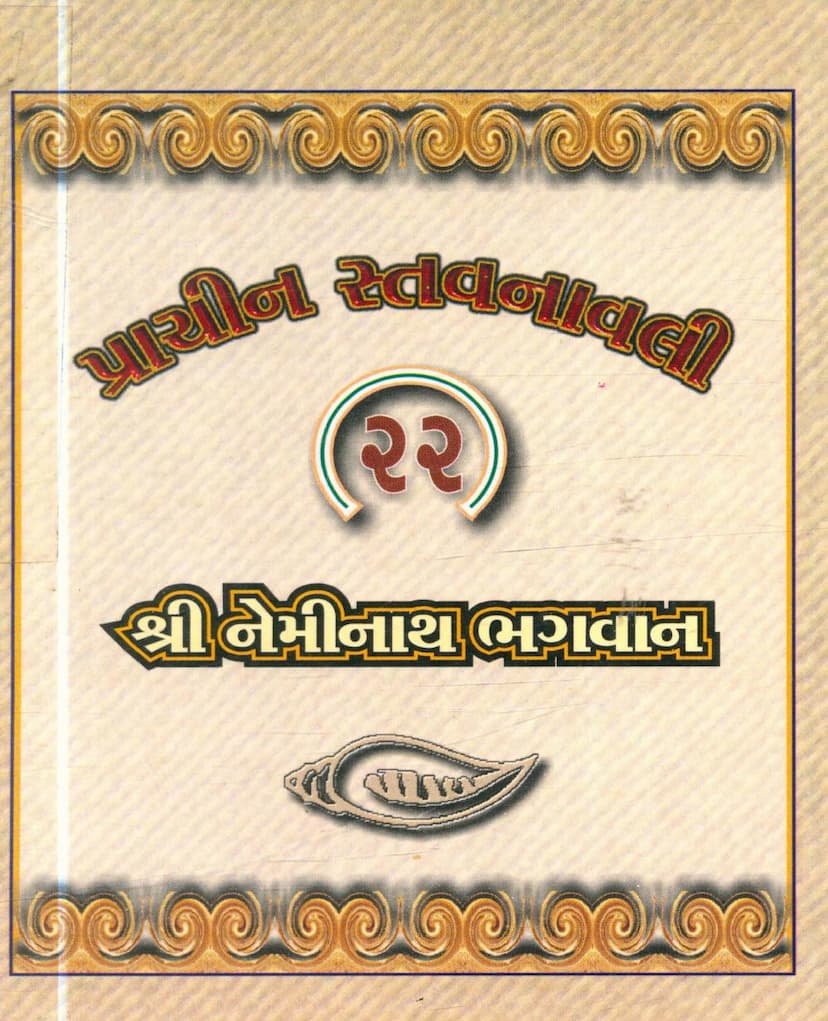Prachin Stavanavli 22 Neminath
Added to library: September 2, 2025
Loading image...

Summary
This document is a collection of hymns and devotional songs (stavans) dedicated to Bhagwan Neminath, the 22nd Tirthankara in Jainism. Titled "Prachin Stavanavli 22 Neminath," it was compiled and published by Hasmukhbhai Chudgar.
Here's a breakdown of its content and significance:
Core Content:
- Devotional Songs (Stavans): The primary content consists of numerous stavans written by various Jain scholars and saints from different periods. Each stavan focuses on different aspects of Neminath's life, his renunciation, his compassion, his philosophical teachings, and his spiritual glory.
- Life of Neminath: The book recounts key events from Neminath's life, including his birth in Sauripuri, his divine attributes, his decision to renounce worldly life at his wedding, his compassionate act of saving animals, his adherence to celibacy, his spiritual penance, and his attainment of Nirvana at Mount Girnar.
- The Story of Rajimati: A significant portion of the stavans narrates the poignant story of Rajimati, Neminath's betrothed, and her devotion and eventual spiritual path.
- Chaitya Vandan Vidhi: The book also includes the Chaitya Vandan Vidhi, a ritualistic procedure for venerating Jain temples and deities. It outlines the specific mantras and prayers to be recited, such as the Irıyāvahiya Sūtra, Namŏtthaṇē Sūtra, and Lokass Sūtra.
- Navkar Mantra: The text highlights the glory and significance of the Navkar Mahamantra, referring to it as the essence of the fourteen Purvas and emphasizing its power for spiritual liberation.
- Spiritual Guidance: The introductory sections and concluding remarks offer spiritual insights, encouraging devotees to cultivate true devotion, understand the divine, and strive for liberation.
Key Themes and Significance:
- Devotion (Bhakti): The collection emphasizes the importance of sincere devotion and love for the Tirthankaras as a path to spiritual upliftment and liberation.
- Renunciation and Celibacy: Neminath's renunciation and his subsequent life as a celibate are central themes, highlighting the Jain ideal of detachment from worldly pleasures.
- Compassion (Karuna): Neminath's compassion, particularly his act of saving animals at his wedding, is a recurring motif, showcasing the Jain principle of Ahimsa (non-violence).
- Spiritual Wisdom: The stavans often convey profound philosophical and spiritual lessons, encouraging introspection and the pursuit of self-realization.
- Preservation of Tradition: By compiling these ancient stavans, the publication aims to preserve and propagate the devotional traditions associated with Bhagwan Neminath.
- Literary and Religious Heritage: The work showcases the rich literary and religious heritage of Jainism, with contributions from various esteemed Acharyas and scholars.
Structure of the Document:
The document is presented in Gujarati script and comprises pages with the following key sections:
- Title Page (Page 3): Clearly identifies the book title, author, and publisher.
- Introduction/Preface (Page 4-5): Provides context and emphasizes the importance of devotion for achieving spiritual liberation.
- Index (Page 6-14): Lists the stavans and their respective authors, along with page numbers. This section serves as a detailed table of contents.
- Stavans (Page 15 onwards): The main body of the book containing the devotional songs attributed to various authors like Shri Virvijayji, Shri Gyanvimalji, Shri PadmVijayji, and many others. Each stavan is often accompanied by its author and the musical meter (raag) it should be sung in.
- Chaitya Vandan Vidhi (Page 9-14): Details the ritualistic procedures.
- Biographical Snippets/Life Facts of Neminath (Page 84): Provides a concise summary of Bhagwan Neminath's life and key details.
- Concluding Spiritual Message (Page 83): Offers a profound spiritual message on gratitude and devotion.
In essence, "Prachin Stavanavli 22 Neminath" is a valuable resource for Jains seeking to connect with Bhagwan Neminath through devotional practices, understand his life and teachings, and engage with the rich tradition of Jain hymnody.